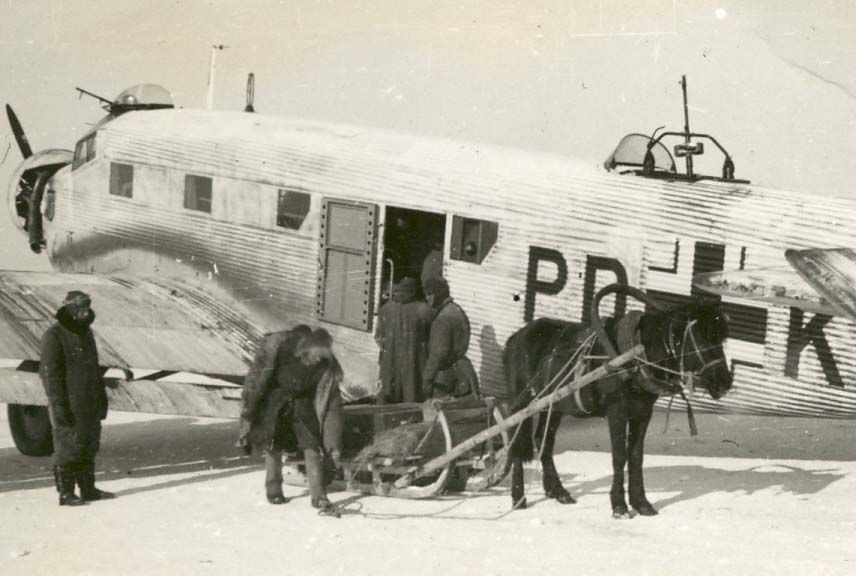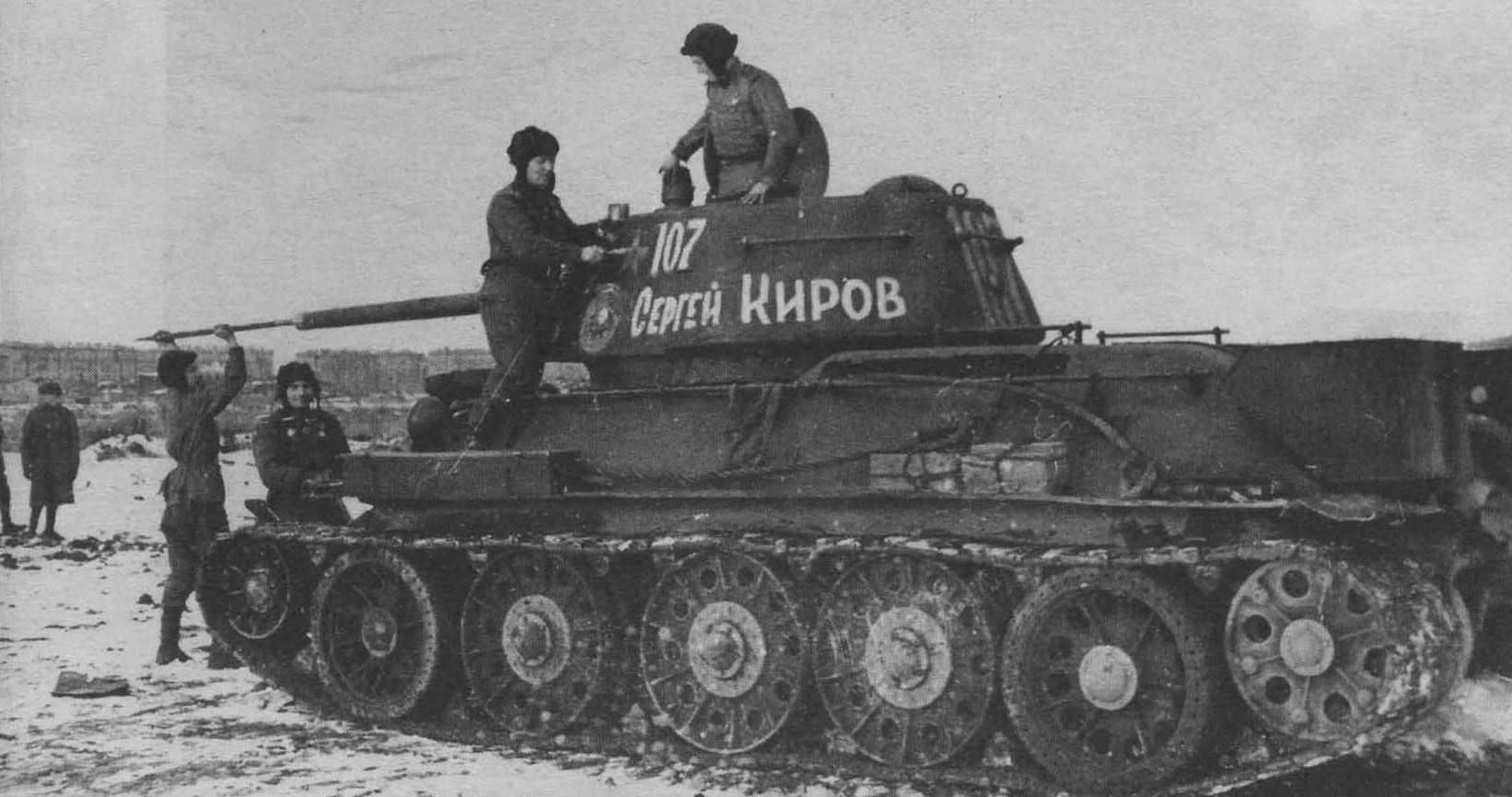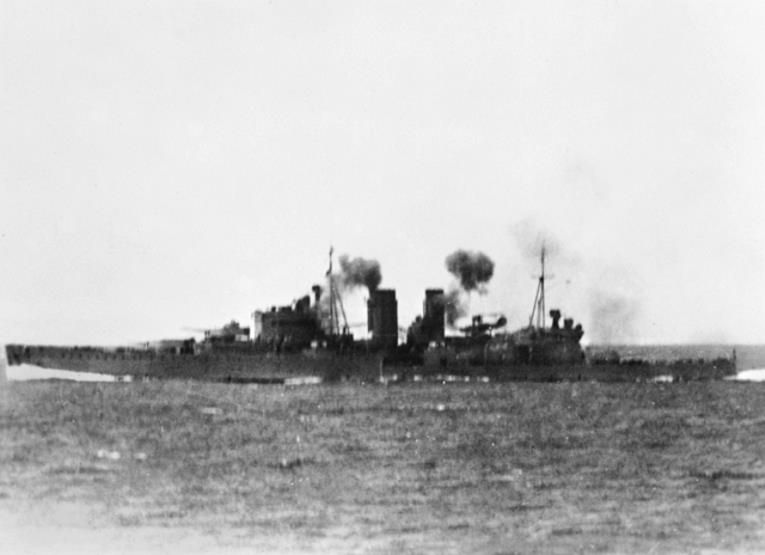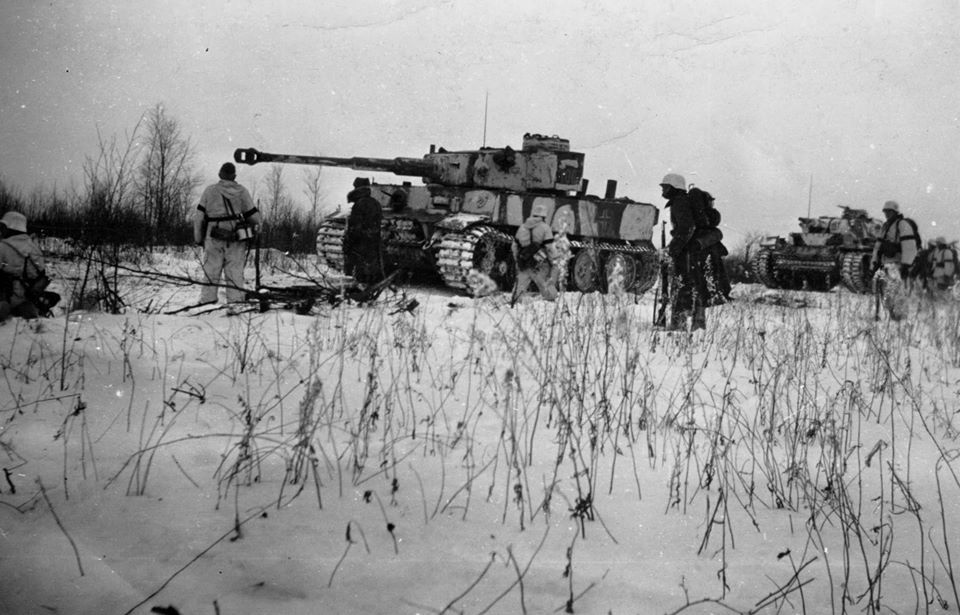yea is real surprising King didn’t convoy from the get go. USA did the same thing in WWI, not learning from their allies. A bunch of guys got slaughtered because of it.
On this day during W.W. 2
-
ahh cool. Like an airboat. Must’ve been pretty loud. I know the boats are
-
February 9, 1942. Eastern Front
The Luftwaffe airlift to the encircled German garrison at Demyansk and Kholm is underway. The German troops in the larger pocket at Demyansk, II Corps, have reported that they require 300 tons of supplies every day to survive. This is a lot of supplies to ferry, considering that every Junkers Ju-52 could only carry about one ton of supplies. The transports are slow and very vulnerable to the Red Air Force fighter attack, so they have to fly in “convoys” of 20 to 40 planes with fighter cover. The airfields within the Demyansk pocket are under sustained bombing attacks, which makes landings difficult at best and sometimes impossible. In the latter situation, the cargo containers are dropped through the bomb bay doors with parachutes and sometimes drift into enemy territory. Early indications are that the airlift will never reach its goal of 300 tons of supplies, but may barely carry enough to keep the soldiers fighting until they can be relieved.
Source: worldwartwodaily
-
February 10, 1942. Eastern Front
The Wehrmacht has suffered serious losses during the winter when they had planned on building up their forces during an inactive period. This is due to the successful Red Army counteroffensive which began around Moscow and spread both north and south. Army Group Centre takes 110,000 casualties during February and receives 70,000 replacements. Since the Soviet counteroffensive began in early December, the Army Group is short 227,000 troops. About a quarter of the replacements are men returning from hospitals, while many of the others are untrained men who previously have been deferred.
Romanian dictator (Conducător) Ion Antonescu arrives in Rastenburg, East Prussia, for a two-day visit with Adolf Hitler. Romania is the Reich’s only source of natural oil and also has a well-respected army which incurred heavy casualties taking Odessa in 1941. Hitler already is thinking ahead to the summer campaign and presses Antonescu to provide large formations for a major offensive in the Army Group South sector. Antonescu agrees but asks for modern weaponry and the transfer of northern Transylvania from Hungary, which would reverse the Second Vienna Award of 30 October 1940. Hitler basically replies that he will think about both requests but he ultimately never grants them. This is a reminder to everyone that Romania and Hungary are almost more interested in fighting each other over their conflicting claims in Eastern Europe as they are in defeating the Soviet Union. Throughout the war, Romanian and Hungarian units are always separated by Wehrmacht formations.
Source: worldwartwodaily
-
@captainwalker I knew about the Romanian/Hungarian animosity from playing an 80s Hex led counter game: Barbarossa. You could never stack those two German allies, because of it. I have a few Osprey books on those two nations, as I always found interesting the units that served alongside the Wehrmacht.
They really were fighting with outdated equipment, so were always an easier target for the Russians. -
February 10 1945 –Hell in the Hürtgenwald The Battle of Hürtgen Forest
Into the Hurtgen Forest for the first time since December 1944. Although its progress was hampered by rough terrain and dense forests that limited movement as well as artillery and tactical air support, the 78th Division finally reached the dam on 9 February.
In early February, American forces attacked through the Hürtgen Forest for the final time. On 10 February 1945, the Rur Dam was taken by American forces and the Forest itself was not cleared until the 17th when the 82nd Airborne Division reached the Roer River. Although the Germans had jammed open the dam’s floodgates a day earlier, flooding the Rur Valley and delaying the U.S. advance to the Rhine for two further weeks, until 23 February, when the flood waters had receded.
The Americans suffered 33,000 casualties during the course of the battle which ranged up to 55,000 casualties, included 9,000 non-combat losses and represented a 25 percent casualty rate. The Germans had also suffered heavy losses with 28,000 casualties — many of these were non combat and prisoners of war.
-
This post is deleted! -
February 11, 1942. Eastern Front
Who exactly remains on the offensive on the Eastern Front remains murky. The Wehrmacht has been re-establishing communications to its trapped units in the east at the same time that the Red Army is still on the move to the west. Recognising that things have stalled, the Stavka now orders the 3rd and 4th Shock Armies of the Kalinin Front to resume their advance south of Lake Ilmen on 12 February. The plan is to tighten the Red Army’s grip on the Demyansk Pocket and, once it is further isolated, attack it directly.
Source: worldwartwodaily
-
February 12, 1942. Eastern Front
Pursuant to Stavka orders, the 3rd and 4th Shock Armies of the Kalinin Front launch a renewed offensive south of Lake Ilmen. The Soviet aim is to further isolate the large German forces trapped in the Demyansk Pocket and then annihilate them. With Soviet 34th Army pressing in from the east and these new forces coming from the west, the Red Army hopes to achieve this objective quickly. However, the Wehrmacht has large forces in the pocket which are being sustained with a Luftwaffe airlift. The Soviets also hope to eliminate a much smaller pocket at Kholm, but it is further west and in a strategically better position than the men at Demyansk. The new Soviet attack is directed into large open spaces and lightly defended areas and is hampered more by the terrain and weather than the enemy. The Germans are happy to divert the Red Army effort into non-vital areas and otherwise let them march around aimlessly through the countryside.
Source: worldwartwodaily
-
February 12, 1942. The Channel Dash
Battle of the Atlantic: Having left Brest late on Wednesday, the ships of Operation Cerberus, better known as the Channel Dash, reach Barfleur, France, by dawn on 12 February 1942. This means that Scharnhorst, Gneisenau, and Prinz Eugen are due south of the Isle of Wight, some 300 miles (500 km) up the English Channel. The British remain blissfully unaware that the German operation is in progress, due to chance, clever German planning, and foul winter weather. Finally, an RAF patrol plane flies directly over the flotilla, but its pilot is under strict orders to not break radio silence. So, he waits until he returns to base to report his observation. By this point, the German ships are passing by Beachy Head in Sussex.
As the ships pass Dover, the British Army’s long-range artillery attempts to engage them. However, the cloudy weather forces the gunners to guess the ships’ location, and the shells all fall short. Royal Navy torpedo boats then approach, but the MTBs are kept at bay by the half-dozen destroyers accompanying the three capital ships. They launch their torpedoes, but the two-mile range is too great and they score no hits. Then, the Royal Navy sends half a dozen Swordfish planes to launch torpedoes, escorted by 10 Spitfires. Adolf Galland’s Luftwaffe fighter cover (Unternehmen Donnerkeil) shoots all of the slow Swordfish down. Overall, the RAF loses 20 bombers and 16 fighters while the Luftwaffe loses 18 fighters.
Sporadic British attacks continue throughout the day, without effect. The RAF sends 242 bomber sorties in all, but only 39 of them can even drop their bombs due to the fighter defences and poor visibility. They score no hits. When the Royal Navy sends destroyers based at Harwich to intercept the flotilla, they are attacked by RAF planes who have not been informed of their presence. When the five remaining destroyers approach, the German ships open fire and damage HMS Worcester. They score no hits. However, the German ships do not escape unscathed, as Scharnhorst hits a mine at 19:55 and Gneisenau hits one off Terschelling a bit later, but they continue sailing. Scharnhorst hits a second mine on the port side at 21:34, and this one causes the engines to stop. At 22:23, though, the Scharnhorst’s crew gets the starboard engine operating again. Under the cover of darkness, the ships continue on their way, Prinz Eugen and Gneisenau about three hours ahead of Scharnhorst.
Photo: Gneisenau and Scharnhorst during the Channel Dash of 12 February 1942.

-
The Channel Dash was a huge embarrassment to the Royal Navy and the Royal Air Force, with the Times commenting that “Nothing more mortifying to the pride of our sea-power has happened since the seventeenth century.” As I recall, when Churchill was informed by telephone that Scharnhorst, Gneisenau and Prinz Eugen had escaped through the English Channel, he answered, "Why?’ then hung up. One recent naval historian summed up the answer by saying that the British had spent the operation periodically tossing handfuls of gravel at the German ships, and that they would have been better served by taking a deep breath, taking the time to concentrate their forces properly and throw one good well-aimed rock.
-
Good stuff. Wasn’t familiar with the “Channel Dash” though I no doubt ran across it at some point : ) I guess failures don’t get as much publicity as wins, unless it’s “Pearl Harbor” :)
-
February 13, 1942. Eastern Front
A renewed Soviet offensive south of Lake Ilmen makes little progress. However, to some extent, this tightens the Red Army grip on the Demyansk Pocket. The Luftwaffe airlift to the pocket by Luftflotte 1 is hampered by poor weather, but that is beginning to improve. Luftflotte 1 is able to supply about half of the Demyansk Pocket’s daily needs by using all of its transport capability and some bomber units. German troops in the pocket are fighting desperately to hold their perimeter and also hold open the “Ramushevo corridor,” a hazardous route north to Staraya Russa.
On the Crimea, both sides are building up their forces for attempts to evict the other side. Joseph Stalin and Stavka representative Lev Mekhlis wished to launch an attack today from the Red Army line at the Parpach Narrows, but the build-up of troops and supplies has been inadequate. The offensive is postponed to later in February.
Source: worldwartwodaily
-
February 13, 1945 Eastern Front
After a battle lasting for almost two months, the garrison of Budapest surrenders to 2nd Ukrainian Front (Malinovsky). Over 100,000 German prisoners have been taken in the city. The Soviet advance from the Oder River to the Neisse River begins to gain momentum despite desperate German efforts. Bunzlau on the Bober River is captured by Soviet forces.
-
Smoke from anti aircraft fire from HMS Exeter as she engages Japanese aircraft. Java Sea, 15th February 1942 (IWM)
Note: This photo was taken on board the Australian cruiser, HMAS Hobart, as Exeter and Hobart engaged attacking Japanese aircraft.
-
Soldiers of either the 4th or 5th Bn, The Suffolk Regt surrender to Japanese troops in the city area of Singapore. After the unconditional surrender, all British Empire forces surrendered to the Japanese 25th Army. Singapore, 15th February 1942. (AWM)

-
February 16, 1942. Eastern Front
Reporting from the encircled garrison at Demyansk, Generalleutnant Graf Walter von Brockdorff-Ahlefeldt reports to OKH that he has 95,000 men with him in the pocket. In order to hold the pocket, Brockdorff reports that he requires 200 tons of supplies per day. While the Luftwaffe is using every available plane to supply the Demyansk pocket, he is only receiving 80-90 tons of supplies per day.
-
@captainwalker
is that a tiger ? Seems pretty big for 42 -
@barnee it is. I checked its operational history though and thought it was first used in late 42 at Leningrad. I don’t think the photo can be from the Demyansk encirclement.
-
@barnee the first tigers were issued in December 1942…so the picture isn’t from the story time frame.
-
February 18, 1942. Eastern Front
The German situation at Demyansk deteriorates on 18 February 1942 when the 290th Infantry Division is forced to withdraw from a salient that it has been holding in the northwest section of the pocket. This “northern corner post” has been the source of much hope for the Germans within the pocket as an area close to the main German lines where a relief attempt could aim over the shortest distance. The Red Army, meanwhile, is busy trying to hem the Germans in at Demyansk and push them back into a small area where they are unable to receive air supplies and can be starved into submission. They are tightening the ring by bringing in more troops and trying to drive as much room between the pocket and the main German lines as they can. The Luftwaffe airlift continues, but it is bringing in less than half of the supplies that the trapped forces claim that they need to hold out. Time is the Germans’ ally, however, as the spring thaw (Rasputitsa) is only a month away.
Photo: A German dispatch rider on the Eastern Front on 18 February 1942. He has adapted a gas mask as face protector against temperatures as low as -40°.
Source: worldwartwodaily







